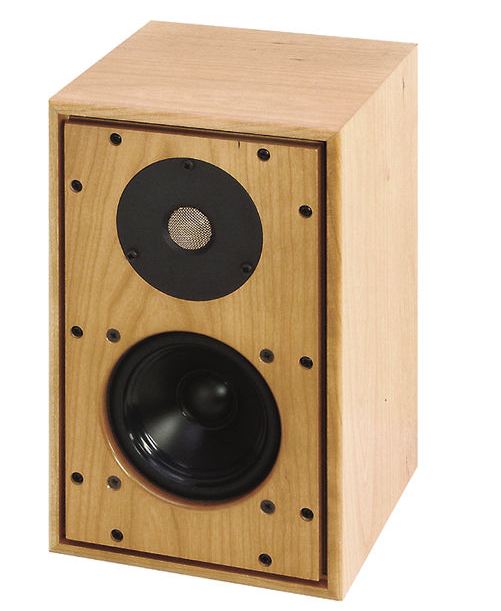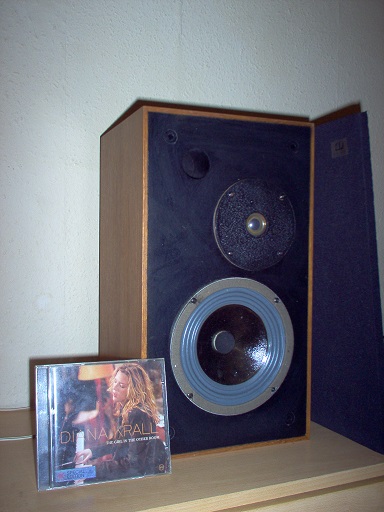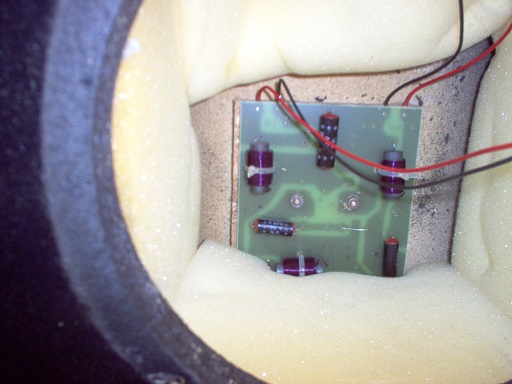The BBC LS3/5A was designed to work in a Ford Transit van on outside location BBC broadcasts.
Any Harbeth derivatives just update the tradition. IMO, what was special about it was that it was one of the first speakers ever to incorporate bass-boost bafflestep for near-field monitoring. And it was a BW3 aka Butterworth 3 design. And used a recessed bass to employ BW3 in an interesting negative polarity way. Which makes phase work.

TBH, I wouldn't mess with the resale value of a goodish little bedroom speaker here.
If building from new, the closed box 5L design could go deeper in bass with a bigger box and (slow) reflex.

This is a 5" paper cone plus 3/4" plastic tweeter Monitor Audio MA7 design in about 12L of reflex. Much more satisfying IMO.
It retains the classic BW3 filter:

BW3 works well with 5" bass, which has negligeable time-alignment issues. Since this is diyaudio, some fun MT or MTM projects might advance the curve.
Any Harbeth derivatives just update the tradition. IMO, what was special about it was that it was one of the first speakers ever to incorporate bass-boost bafflestep for near-field monitoring. And it was a BW3 aka Butterworth 3 design. And used a recessed bass to employ BW3 in an interesting negative polarity way. Which makes phase work.
TBH, I wouldn't mess with the resale value of a goodish little bedroom speaker here.
If building from new, the closed box 5L design could go deeper in bass with a bigger box and (slow) reflex.
This is a 5" paper cone plus 3/4" plastic tweeter Monitor Audio MA7 design in about 12L of reflex. Much more satisfying IMO.
It retains the classic BW3 filter:
BW3 works well with 5" bass, which has negligeable time-alignment issues. Since this is diyaudio, some fun MT or MTM projects might advance the curve.
Please see post #29.You need to completely rework the mid, tweeter, and of course the bass.
You're more likely to mess up the sound. You need to select proper bass material to match the midrange. Not knowing what Harbeth driver is made of, it's kind of hard. Of course the big if is if you know how to design a proper xover. You need to completely rework the mid, tweeter, and of course the bass. (Not to mention having to purchase measurement equipment).
Harbeth uses a plastic cone — really you should just need to choose a smooth woofer with extended FR (up to at least 1 kHz), i prefer coated paper cone woofers (usually coated by me). No need to muck with the XO in the Harbeth at all. Just carefully hi-pass it at 150-200 Hz. It is not really practical to do anything but bi-amp.
dave
No need to muck with the XO in the Harbeth at all. Just carefully hi-pass it at 150-200 Hz. It is not really practical to do anything but bi-amp.
dave
I wish it were that simple.
You're more likely to mess up the sound. You need to select proper bass material to match the midrange. Not knowing what Harbeth driver is made of, it's kind of hard. Of course the big if is if you know how to design a proper xover. You need to completely rework the mid, tweeter, and of course the bass. (Not to mention having to purchase measurement equipment).
I agree with you about the Harbeths. I owned Harbeths in the 80's and 90's and had a pair of the first generation HLP3's in the mid 90's. For a short time then Harbeth made a passive bass unit designed specifically for the P3's. They didn't make many and have been out of production for a long time.
Previous to this I used a nice subwoofer with the P3's and in all honesty I think the subwoofer was a better way to go.
It is virtually impossible to turn the P3's into 3 ways by redesigning the crossover and cabinet and adding a bass driver.
For some time now the P3 has used the proprietary Harbeth designed driver with their "Radial" material. And you can be dead certain that Alan Shaw is not going to give the design parameters to some hobbyist.
The best way to get more bass with a Harbeth speaker is to really get one of the bigger Harbeth's. However, now that they are so popular they are pricey and hold their price in the used market. Just have a look at the prices for the Compact 7 or 30.2 speakers.
Last edited:
There are no doubt that Harbeths are good speakers, but there is no reason why some hobbyists couldn't make one just as good or better. There are a lot of good drivers that are better than those used in the Harbeths. Not sure how much OP willing to invest in speaker design, but making a DIY pair of speakers that are better than Harbeth is not that difficult (in fact it might be easy).
allright then, since even Pano and Dave agree. ill go with a electronic crossover!
the electronic crossover make more sense since I'll be able to try my other small 2 ways ( I have the P3ESR, kef ls50 and atc scm7v3.)
I think Pass will come out with a kit on the diyaudio store that is similar to the pass b5?
the electronic crossover make more sense since I'll be able to try my other small 2 ways ( I have the P3ESR, kef ls50 and atc scm7v3.)
I think Pass will come out with a kit on the diyaudio store that is similar to the pass b5?
Last edited:
I think Pass will come out with a kit on the diyaudio store that is similar to the pass b5?
B5 is specifically for OB, B4 is appropriate for your needs.
dave
I wish it were that simple.
the perfect is the enemy of the good - perhaps for the OP's intended application the several suggestions for keeping the little Harbeths intact, highpassing them and adding woofers is as complicated as he wants/needs to go
Really? Why?You need to select proper bass material to match the midrange.
trueB5 is specifically for OB, B4 is appropriate for your needs.
dave
Really? Why?
Well to get the best sound that might be needed. If you can manage to cross the mid and bass pretty low then I guess it's not needed, but it doesn't make sense to get more bass at the expense of the Harbeth natural sound.
the perfect is the enemy of the good
That is how messy came about. It can be said that the enemy of the good is a lousy philosophy.
Well to get the best sound that might be needed. If you can manage to cross the mid and bass pretty low then I guess it's not needed, but it doesn't make sense to get more bass at the expense of the Harbeth natural sound.
Weren't you talking about the construction material?
Weren't you talking about the construction material?
I thought I was talking about the driver material. I guess part of the appeal of the Harbeth is the sound cohesion. If you use a bass driver with different material vs. the mid, then it would ruin the sound.
why would it ruin the sound?
If the xover not properly designed. Like I said, you have to rework the mid, tweeter, and of course the bass. Someone here said all you have to do is put a high pass on the mid. I wish it were that simple (unless you magically found a bass driver that matches the efficiency of the mid perfectly). Most likely the mid has to be attenuated to match the bass, and if that is the case you have to rework the tweeter as well. You have to also control the bass roll of the match the mid. It can get complicated. I don't think it is as simple as just "putting a high pass on the mid". Also the Harbeth might use a certain type of xover order (1st, 2nd. or whatever), and your xover topology itself might change the sound regardless of the bass driver material.
If the xover not properly designed. Like I said, you have to rework the mid, tweeter, and of course the bass. Someone here said all you have to do is put a high pass on the mid. I wish it were that simple (unless you magically found a bass driver that matches the efficiency of the mid perfectly). Most likely the mid has to be attenuated to match the bass, and if that is the case you have to rework the tweeter as well. You have to also control the bass roll of the match the mid. It can get complicated. I don't think it is as simple as just "putting a high pass on the mid". Also the Harbeth might use a certain type of xover order (1st, 2nd. or whatever), and your xover topology itself might change the sound regardless of the bass driver material.
well, a Pass B4 would do all this. very simple solution... attenuation via the amp of the woofers...
- Status
- This old topic is closed. If you want to reopen this topic, contact a moderator using the "Report Post" button.
- Home
- Loudspeakers
- Multi-Way
- Could I turn my small Harbeth into a big 3 way with passive crossover?